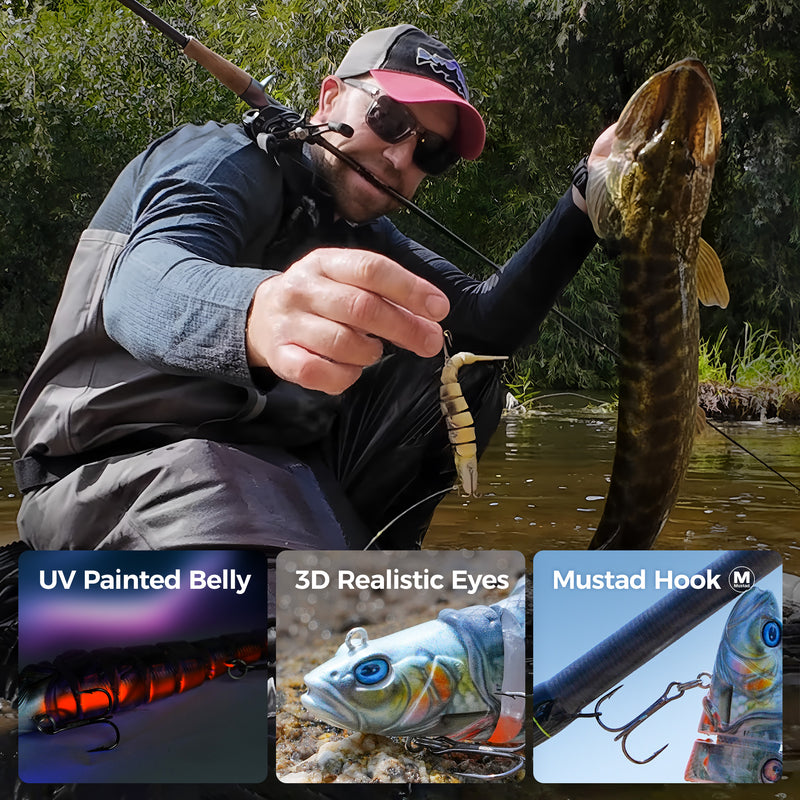Unleash the Ultimate Bass Fishing Secrets with These Irresistible Lures!
Bass fishing is not just a pastime; it's an exhilarating challenge that combines patience, skill, and a bit of luck. As any seasoned angler will tell you, the key to a successful day on the water often lies in the selection of the right lures. Different types of lures can significantly impact your catch rates, and understanding how to match them to the bass's behavior and environmental conditions is essential. In this article, we will delve into various types of fishing lures that can help you reel in more bass, whether you're a novice or a seasoned pro. Get ready to uncover the secrets that will elevate your bass fishing game!

Understanding Bass Behavior and Preferences
To effectively target bass, it's crucial to understand their feeding habits and preferred habitats. Bass are opportunistic feeders, often lurking in areas with cover like rocks, vegetation, and submerged structures. They thrive in both freshwater lakes and rivers, adjusting their behavior based on the time of year and the conditions of the environment. For instance, during warmer months, bass are more active and likely to chase after faster-moving lures. Conversely, in cooler seasons, they may slow down, requiring a more deliberate approach. Seasonal changes also dictate their feeding patterns; understanding these shifts can greatly influence your lure selection and fishing strategy.
Types of Fishing Lures for Bass
When it comes to bass fishing, choosing the right lure can make all the difference. Here’s an overview of some of the most effective types of lures that can boost your success on the water:
1. Crankbaits
Crankbaits are designed to mimic the swimming action of baitfish, making them highly effective for attracting bass. They come in various sizes and colors, allowing you to match them to the local forage. Crankbaits are especially effective in shallow waters and can be used to cover a lot of ground quickly. The key is to vary your retrieval speed and depth to find out what works best on any given day. I've seen friends catch impressive bass while using crankbaits in early spring when the fish are actively feeding.
2. Spinnerbaits
Spinnerbaits are versatile lures featuring one or more spinning blades that create vibrations and flash to attract bass. They can be fished in a variety of conditions, including murky waters, where their visibility helps draw strikes. The best part about spinnerbaits is that they can be fished at different depths and speeds, making them adaptable to changing conditions. A fishing buddy of mine swears by spinnerbaits when fishing around heavy cover, stating that they often trigger aggressive strikes from bass hiding in the shadows.
3. Jigs
Jigs are a staple in bass fishing, known for their effectiveness in various scenarios. They come in different styles, including flipping, swim, and football jigs. The weight and type of jig you choose can depend on the depth of water and the cover present. Jigs are particularly effective when fished slowly along the bottom, mimicking the movement of crawfish or other prey. My experience has shown that a well-presented jig can entice even the most finicky bass, especially during the colder months when fish are less active.
4. Topwater Lures
There's nothing quite like the thrill of watching a bass explode on a topwater lure. These lures float on the surface and create noise or movement that attracts fish. Popular types include poppers, frogs, and walking baits. Topwater fishing is particularly effective during early mornings or late evenings when bass are feeding near the surface. Remember to use a steady retrieval pace to create a realistic presentation. A memorable day for me was when I caught a 5-pound bass on a topwater frog, and the excitement of that strike is something I'll never forget!
Tips for Choosing the Right Lures
Selecting the right lure involves more than just personal preference; it's essential to consider water clarity, temperature, and the specific behavior of the bass that day. In clear water, opt for more natural colors to mimic the local forage, while in stained water, brighter colors can help draw attention. Additionally, adjusting your lure choice based on the temperature is crucial; cooler waters may require slower presentations, while warmer temperatures can lead to more aggressive strikes. A good rule of thumb is to pay attention to the conditions and be willing to adapt your lure choices accordingly.
Techniques for Using Bass Lures Effectively
Once you've selected your lures, employing the right techniques is vital for maximizing their effectiveness. Vary your retrieval speed and motion to trigger strikes; bass often respond differently based on their mood and the conditions. For instance, a slow, steady retrieve might work well in cooler weather, while a faster, erratic motion could be more effective on a hot, sunny day. Experimenting with different techniques, such as twitching or pausing, can yield surprising results. A friend of mine often shares how varying his approach led to a significant increase in his catch rates, and it's a lesson worth remembering.
Maximizing Your Bass Fishing Success
In summary, the world of bass fishing is rich with opportunities, and the right lures can make all the difference in your success. By understanding bass behavior and preferences, exploring various types of lures, and adapting your techniques, you can significantly improve your chances of landing that trophy bass. Don't hesitate to experiment with different lures and methods; the more you learn and adapt, the more successful your fishing trips will be. So grab your gear, hit the water, and unleash the ultimate bass fishing secrets that await you!








